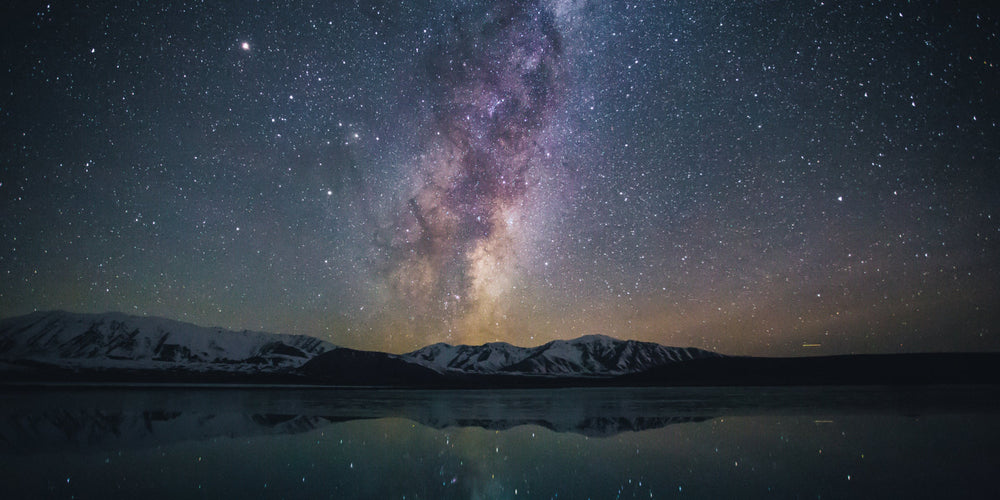5 Cool Facts About Winter Solstice You Might Not Know About

Stay tuned to our latest news
The Winter Solstice is an astronomical event that occurs each year in both the Northern and Southern Hemispheres, marking the shortest day and longest night of the year. Various cultures around the world celebrate and observe this event with rituals, festivals, and gatherings.
So as the Winter Solstice approaches, learning more about it allows you to appreciate it even more and learn why people around the world celebrate it according to their own cultures. To that end, here are five fascinating facts that will leave you in awe of this celestial event.
-
Winter Solstice Happens More Than Once a Year

Winter solstice happens not just once, but twice a year. This phenomenon occurs due to the tilt of Earth's orbit when it is tilted on its axis by approximately 23.5 degrees. This causes the Northern and Southern Hemispheres to receive different amounts of sunlight throughout the year. During the winter solstice, one hemisphere is tilted furthest away from the sun, resulting in the shortest day of the year and the longest night.
In the Northern Hemisphere, the winter solstice occurs around December 21st, marking the beginning of winter. Conversely, in the Southern Hemisphere, the winter solstice occurs around June 21st, signaling the start of winter in that hemisphere. During these times, the sun is at its lowest point in the sky, leading to the shortest day of the year. As the Earth continues its orbit, the tilt gradually shifts, causing the opposite hemisphere to experience its own winter solstice.
The concept of two winter solstices may be surprising, but it is a result of the Earth's tilt and its orbit around the sun. There’s nothing unnatural about it and shouldn’t cause worries. This phenomenon plays a significant role in the changing of seasons and the amount of daylight experienced in each hemisphere.
-
Winter Solstice Happens in the Blink of an Eye

The winter solstice is a brief moment when the sun is positioned directly over the Tropic of Capricorn. Although people often refer to the whole day as the winter solstice, it actually only lasts for a moment.
Short and simple, its significance lies in the fact that it marks the shortest day of the year. However, it also brings with it the promise of more daylight ahead. As the solstice passes, the days gradually start to lengthen, and the promise of spring and new life becomes more apparent.
So, while the winter solstice is a fleeting moment, it carries a deeper significance as it symbolizes the turning point where the darkness of winter begins to give way to the light of spring.
-
Winter Solstice USUALLY Marks the First Day of Winter

You’d expect that given its name; the winter solstice will mark the first day of winter. However, that is not always the case. When determining the start of the winter season, it's important to note the difference between meteorological and astronomical seasons. Meteorological seasons are based on the annual temperature cycle, with winter beginning on December 1st, while astronomical seasons are based on the position of the Earth in relation to the sun.
Therefore, winter solstice may not usually be on the first day of the cold season depending on whether you use meteorological or astronomical seasons as your basis.
-
Winter Solstice Has a Christmas Connection

The connection between traditional winter solstice celebrations and the origins of Christmas customs is deeply rooted in the ancient practices of various cultural and religious groups. Many Christmas customs, such as the Christmas tree, wreaths, and festive traditions, have origins in the traditional festivals and pagan celebrations surrounding the winter solstice.
Christian leaders incorporated Christian meaning into these ancient celebrations in order to attract others to their faith. By adopting and adapting existing customs and traditions, such as the use of evergreen trees and the exchanging of gifts, Christian leaders were able to connect these practices to the Christian faith and the birth of Jesus Christ.
Specific examples of how solstice celebrations have influenced modern Christmas traditions include the use of evergreen trees as a symbol of life and rebirth, the tradition of hanging mistletoe for good luck, and the practice of exchanging gifts to symbolize generosity and goodwill. These traditions have evolved over time but continue to hold a connection to the ancient winter solstice celebrations.
-
Winter Solstice Does Not Only Happen on Earth

Surprisingly, winter solstices occur on other planets in the solar system due to their tilt and orbit. For example, Mars has a tilt similar to Earth, so it experiences winter solstices in a comparable manner. However, planets like Saturn, Uranus, and Neptune have extreme tilts, causing more dramatic seasonal shifts.
Saturn has a winter season that lasts approximately 7.5 years due to its long orbit around the sun. Uranus experiences winter solstices roughly every 42 years, and Neptune's winter season can last for over 40 years. The varying lengths of winter seasons on Saturn, Uranus, and Neptune demonstrate the unique and diverse nature of each planet's relationship to the sun.
While winter solstice celebrations on Earth, such as Christmas and Hanukkah, hold cultural significance and mark the astronomical event with festivals, ceremonies, and gatherings, it is unknown if winter solstice celebrations exist on other planets in our solar system.
Takeaway
The Winter Solstice is a fascinating astronomical event that occurs annually in the Northern and Southern Hemisphere. It is celebrated and observed by various cultures around the world, each adding their own unique rituals and traditions to the occasion. By learning more about it, we can deepen our appreciation for this celestial phenomenon and understand why it holds such cultural significance. From the dual occurrences of the solstice in different hemispheres to its fleeting moment symbolizing the transition from darkness to light, there is much to be amazed by. Moreover, the connection between the Winter Solstice and Christmas customs highlights the rich historical and cultural interplay that has shaped our modern celebrations. Lastly, it is intriguing to note that winter solstices occur on other planets in our solar system, showcasing the diverse nature of celestial events. So as we approach the Winter Solstice, let us embrace the wonder of this celestial occurrence and celebrate the beauty of our world and beyond
Renpho Health Tips
-

Holiday Fitness Fun: Being Creative While Staying Active
December 5, 2023
Read more >
-

How to “Sleigh” the Holidays With Healthy and Tasty Cookies
December 4, 2023
Read more >
-

5 Tips to Renew Your Fitness Journey During the Holiday Season
December 3, 2023
Read more >
-

How to Relax Your Muscles and Body During the Holidays
November 30, 2023
Read more >
-

Maintaining Mental Wellness During the Holiday Season
November 29, 2023
Read more >




